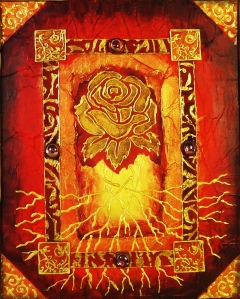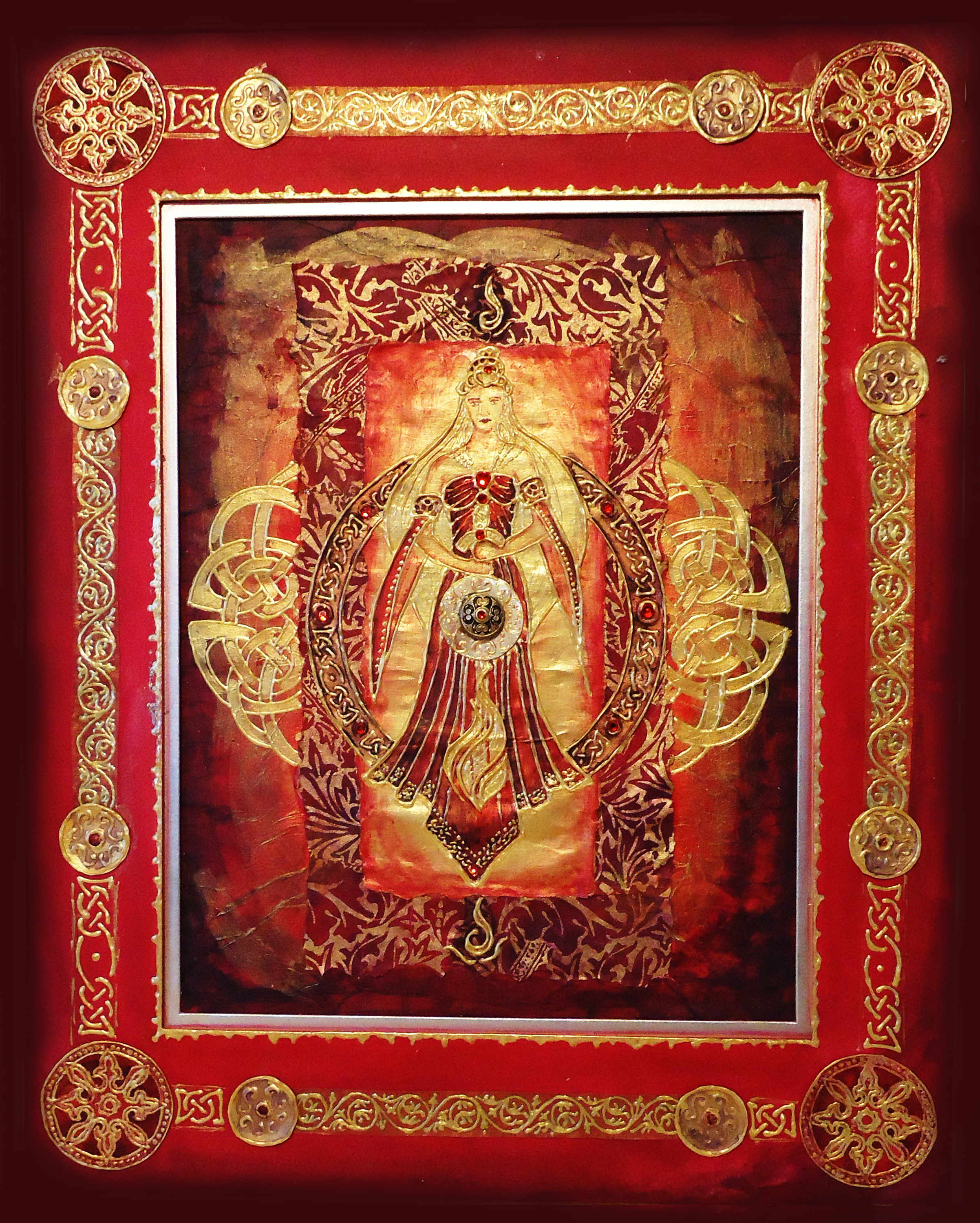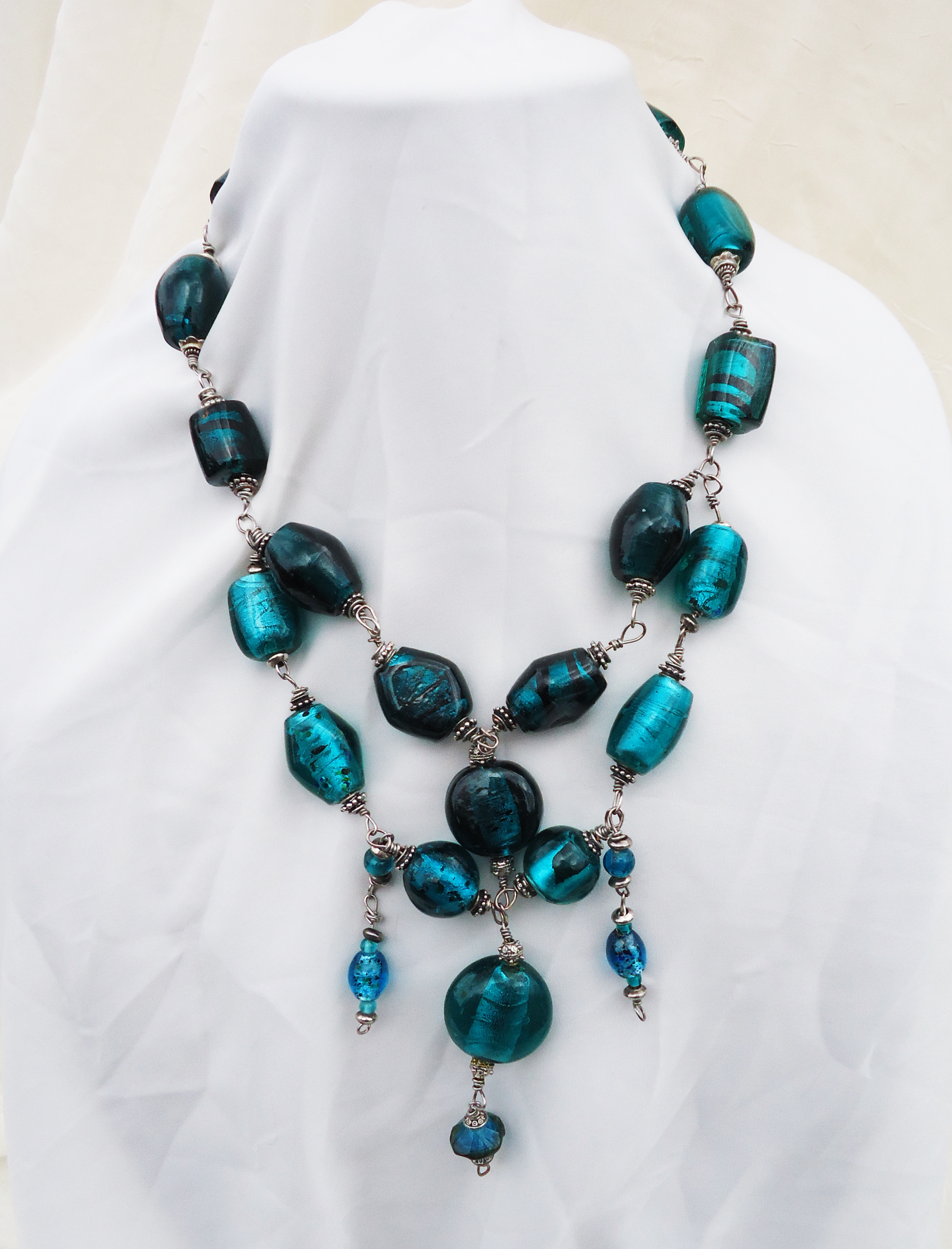Your Outcome Card: Tarot Blog Hop
I’m taking a break from my ongoing series on Grassroots Leadership to join the Tarot Blog Hop. In most Tarot readings there’s some kind of future or “outcome” card. The reader might pull a 3-card spread, a Celtic Cross, or some other format. The outcome card is, what is the outcome of this. Essentially, it’s the card that determines your future. However, I don’t really do predictive readings. I tend to work with Tarot more from a perspective of personal growth work. What do I need to understand about this issue? What do I need to understand about myself?
When I teach personal growth work, one of the things I want to do is empower people to reach for their dreams, their destiny, for what their soul truly desires. In essence, I want them to determine their own Outcome card, not have someone tell them what their destiny is. There is a tremendous power in each person really fully seeing, feeling, smelling, hearing, and articulating their own outcome.
But many people have a hard time doing this. In my work facilitating rituals, there’s a lot to learn about people and their basic tendencies. People have basic default learning modalities–visual, auditory, kinsethetic, and other intelligences such as emotional intelligence. There’s also folks who have an easy time articulating their future goals. I call them “Reachers For.” There’s also “Movers Away From,” folks who can only really articulate things in the negative. “I don’t ever want to be starving again,” “I don’t want to have a job that sucks,” “I don’t want to date someone like that again.” They have a tremendously difficult time articulating things like, they want to go back to school, or find a more passionate and loving relationship, or succeed in their career.
Sometimes, pulling an Outcome card for yourself or working with a Tarot reader who is doing a reading can help you to circumvent that nagging “You shouldn’t want this” voice. Or the “You don’t deserve this,” or even the deer-in-the-headlights freeze that happens. I sometimes ask people, “What do you want for your life?” And they just look at me blankly. Nobody has ever asked them that before.
Sometimes I ask people in a ritual, “What do you want?” and they burst into tears. Or they get angry at me. And that’s ok. Sometimes my job as a ritual facilitator is to be a catalyst, to help someone get to catharsis. Some other ritual facilitators I know asked that question, “What do you want? What makes you happy?” Some of the people in the ritual had a pleasant, happy experience.
At least half the participants started sobbing, and realized, they hated their jobs, their partners, their lives, their children, the whole mess of their life…this wasn’t what they’d ever wanted for themselves and now they felt stuck. In this case, it was a women’s ritual, and many of these women had been caretakers their whole lives and had never, ever been encouraged to ask for anything for themselves, to just do what was put before them, pressured to get married and have a family.
I’m a strong believer that if I want out of a situation, then I need to have a goal in mind. Now–I have no problems articulating my goals. However, focusing on them is occasionally difficult. Here’s an exercise I’ve used with groups to help all sorts of people articulate, and focus on, their goals and dreams.
At its essence, it’s creating a collage that is your Outcome card. Instead of pulling a card from a deck to tell you what your outcome is, you are going to create that for yourself. By its nature, this exercise helps to get you out of your head. It’s not writing out a to do list, it’s not articulating a plan. It’s just envisioning that future moment and creating a nonverbal, visual representation of it.
This is absolutely an exercise that you can do on your own at home if you have collage materials on hand. However, it’s also a really fun exercise as a group. The benefits of doing this as a group include access to more collaging materials if folks pool their resources (and possibly a trip to the craft store). There’s also the tremendous benefit of accountability. Often when I see someone finally able to articulate their vision and their dream, it helps to speak out loud what they want. Speaking that and having it witnessed helps to make it more real.
But first, let’s get to the actual activity.
Assuming you are doing this in a small group, I suggest planning for at least 2 hours, perhaps 3. For a 2-hour event, I typically have the schedule something like:
- Doors open 5:30 pm
- Workshop begins 6:00 pm with introductions
- Trance Journey/Meditation at 6:20
- Collaging begins by 6:30 or so
- Winding down at 7:30
- Inviting people to share their piece, and their story around 7:45
- 8:00 closing the gathering, but leaving the space open for people to stay and socialize, perhaps with potluck or snacks.
I encourage folks to come in early, because there’s a basic rule of thumb about facilitating personal growth activities like this. It takes people about an hour to 90 minutes to start feeling comfortable around new people. And this exercise tends to work better when people are willing to open up and share their stories.
Vulnerability leads to catharsis. Catharsis leads to healing and transformation, and transformation opens the way to becoming who we want to become.
For the collage part of things, I stress that people do not need to create an amazing work of art. I even suggest that if people are professional artists, like I am, that they allow their work to be rough and not focus on it being perfect. To go with the mood instead of technical perfection. Later, when we share our pieces with each other, I stress several agreements. That we are not to talk about whether or not we like a piece or whether or not a piece is “good.” We can comment on physical reality. “I notice you used a lot of red.” “I notice you used the image of wings and light.”
 Trance Journey
Trance Journey
The trancework that I facilitate is ecstatic and extemporaneous, and so I’m not going to write a complicated meditation for you to read aloud to yourself or to others.
Actually, I don’t really think that scripts like that work very well. I see them as more of a guideline. The kinds of trance work that I do typically involve a lot of techniques like overlapping voices and sounds, rhythm, movement, and chanting, depending on how deep I’m trying to take a group. In fact, I’m about to start recording some of these journeys so that people can do them at home.
A rather effective technique to get a group into a trance state is to get everyone singing a tone together. Essentially, it’s chanting/droning “OM” but without stopping. Each person breathes when they need to, but the overall group keeps the sound going. Those who have musical skill can add a harmonic note, or you can also add in a singing bowl or two. You can actually have one person speaking words over that toning/droning sound, such as doing a guided meditation, and having people focused on making the sound and the sound itself takes people into a far deeper trance headspace than if you were just reading the meditation off the page.
Another effective trance technique is soft drumming. I highly recommend Layne Redmond’s frame drumming, or some other soft polyrhythmic drumming.
For trancework, asking questions is always more effective than telling someone what they are seeing or doing. Just like laying down and Outcome card tells someone what they “should” do, a guided meditation often tells people what they “should” do instead of opening them up to their deep wisdom. Instead of, “You walk along a path and you find yourself in a forest,” I simply ask questions.
“What path do you find yourself traveling? What does it smell like here, what sounds are around you? What does it look like, how do you feel?” I just ask questions and let them build the experience.
For the Outcome card, I’ll often ask, “What does it feel like to be who you are right now? What are your thoughts, your feelings?What do you know about yourself? What do you desire? What do others think of you? What do you fear? What do you feel?”
And then I take them back to the path. “Moving onward on that journey, you step into the future. You step into Who You Will Become. You step into the moment of victory when you have achieved the outcome you desire, when you have reached for your dream and it has reached for you. What do you feel in this moment of victory? How do you hold your body? What are the words you would say, what are the sounds you here? What do you think about yourself, and what do others think of you? What are your feelings, your desires?”
I’ll keep asking them questions building on as many senses as I can until I feel that they have really internalized the feeling. Then I’ll ask them to return to now, to this time, to this place, and to capture that moment of victory, that Outcome, on their pages.
Paper, Glue, and Glitter
Once the glue comes out, I’m lucky if I hear anything but the occasional grunt from people, they get so intent into their work. It can help to keep the soft music playing to help people keep focus though. Some groups will be tempted to start chattering at that time, and there’s usually someone who starts complaining about things going on in their life. That tends to bring the group down quite a bit, and you want to keep the group focused on that moment of victory, that feeling, that sensation.
Typically at the beginning of the workshop I’ll ask people to hold silence while working on their collage card so that they can respect each other person’s work and help hold focus, and I tell them there will be plenty of time to talk at the end.
I find that a regular letter-size sheet is a good size for this project; too much larger and it’s more space than they can cover in a 2-hour workshop. 9×12 can work too.
 Finding Your Magic
Finding Your Magic
This type of a collage process also works when I do workshops like finding your magic. Essentially, opening to creativity helps people to get past some of the roadblocks, that hamsterwheeling in our head that traps us in “I can’t,” or “I shouldn’t,” or “I don’t know where to start.”
If we can skip past all the logistics of “How” for just a moment, then we can begin to get enchanted and enraptured by that moment of victory, that moment of magic. In fact, the word I want to use isn’t just enchant, it’s seduce. We sometimes need that seductive, siren call of our dream, of our potential future, to call us out. To call us forward past the difficulties we might face while striving to reach for that dream. To give us the strength to go past their comfort zone.
Sometimes what keeps us from reaching for what we truly want–for what Joseph Campbell calls “following your bliss,” is the wounds of our past. Those wounds can have a fierce hold on us and can keep us from reaching, from risking. And from healing.
I often say that the symbolism of Tarot is similar in many ways to a dream–multilayered, multitextured, and deep. Similarly, when we work with trancework, and with the collages we create as part of that process, that imagery and symbolism is similarly deep and multilayered.
Looking back at our collages later, we might notice more things that we didn’t the first time around.
However, this is one of the other reasons why it’s valuable to do this exercise in a group. People will look at your pieces and notice colors or images that you used that you might not have realized you were focusing on. For instance, someone might point out how many vibrant red colors you use in your piece. That, in turn, might help you to realize how much you have been wanting romance in your life. It’s an oversimplified example, but you can see how people pointing out the obvious is sometimes very useful as part of this process.
Collaging an Outcome card isn’t going to heal all the wounds of your past or make the future come to pass. Each of us still has a lot of work to do. But being willing to envision the future, opening to the enchantment of that victory, that Outcome, can begin a song of healing. It can help us to take a moment of that future victory back in time with us, take that magic into us. The song and sensation of that future, that destiny, can heal us and help give us the strength to reach, even when it’s difficult.
Pulling an outcome card from a deck can still provide a lot of value if you’re looking for clarity in a situation. However, consider the additional power you can get from working to reach for your own outcome, your dream, your destiny.
There’s really only one question to ask. What do you want?
–
Continue reading more posts on Tarot and Creativity on the Tarot Blog hop:
Previous | Master Blog List | Next
Filed under: Personal Growth, Ritual Tagged: Celtic Cross, outcome card, Personal growth, personal transformation, spiritual growth, Tarot





